Strong Hands Make Good Readers
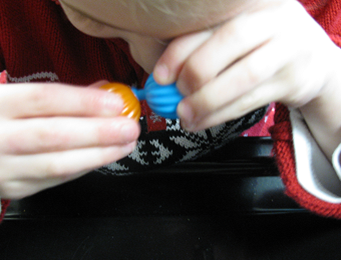
These ideas are designed to address developing handskills for the young beginning braille reader who is ready to start braille instruction and who has received preschool instruction on concept development. For experienced TVIs this will be a review of ideas and activities you may already be familiar with. Many of these fine motor activities are simple, and may well be things you already do. The ideas and activities listed below are not necessarily my own. They have been gathered over the years from other TVIs, books, and resources, and I have simply pulled them together for your reference. Thanks to all those who shared their ideas with me!
Readiness Skills
Preschool skills and concepts important for braille learning and reading
- Manipulate objects with purpose and explores with two hands
- Communicate with others
- Demonstrate emotional and mental readiness
- Discriminate, name and match shapes, textures and objects
- Sort by features, size and shape (classification)
- Relate part to whole
- Sequence objects, activities or events, ability to anticipate
- Background of rich and varied experiences to assist with comprehension
-
Understand concepts:
- Directional concepts: Left, right, behind, in front, top, bottom, back, center, nearest, middle, farthest, above, between, upper, next to, below, up, down, higher, lower, over, under, closer, away from, beside, facing, in, on, out
- General concepts: tall, short, big, small, different, same, more, less, first, second, last
- Explore books, turns pages, listens to and understands simple stories
- Explore and understand 2 dimensional shapes and simple pictures
- Follow 2-3 step directions
- Develop basic pre-reading skills along with peers
Planning Activities
When planning activities for young children, try to include music, movement and games. These help children to develop many skills, in addition to making learning fun.
Music
-
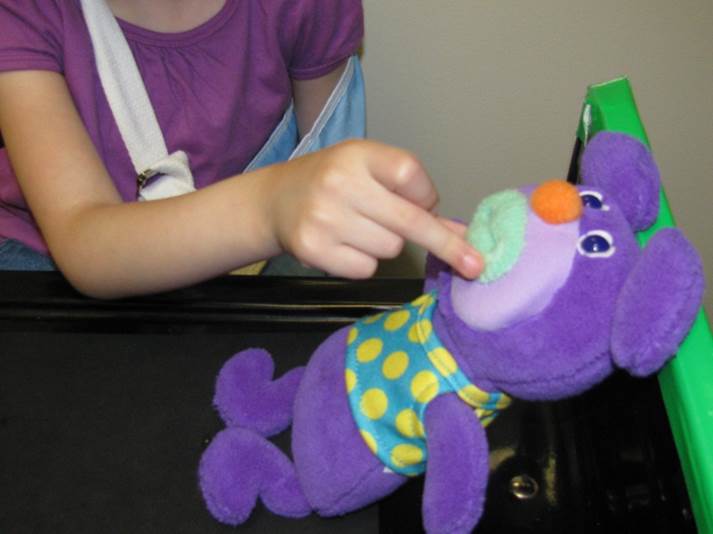 Increases attention and concentration
Increases attention and concentration - Facilitates multisensory learning
- Improves memory
- Can raise energy levels and reduce stress
Movement
- Cross midline
- Improve blood flow
- Stimulates
- Reduces tension
Games
- Creates fun environment
- Increases memory for activities/learning
Areas of Instruction
- Tactual sensitivity
- Hand strength
- Wrist strength
- Hand dexterity
- Finger isolation
- Finger strength
- Tactile discrimination
- Tracking
- Hand positioning
- Resources
Tactile Sensitivity
- Explore hairbrush, toothbrush, sponges, and towels
- Play with finger paints, pudding, shaving cream
- Add textures such as sand, glitter, small craft/toy objects
- Differentiate temperatures, e.g. with ice, hot pads
- Water play: scooping, pouring, cupping in palms
- Sensory Box: rice, macaroni, beans, sand; hide coins and other objects
-
Textures: sandpaper, aluminum foil, fabrics, screens
- Matching games: finding the same and different objects. Encourages exploration and discrimination
- Spinners with board games
- Card games
- Make texture books
- Differentiate: hard/soft, sharp/dull, wet/dry, sticky/slimy, bumpy/smooth
- Explore toys and the environment
Hand Strength
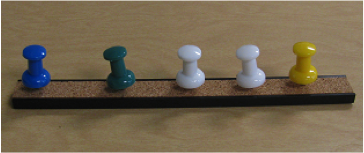
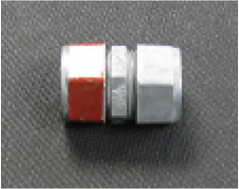
- Pull string toys w/speech
- Play with hammer toys, clay/play dough
- Play with push lever toys (as in gumball machines)
- Play with push button toys
- Push down on spinner toys
- Wind up music boxes or Jack-in-the-Box toy
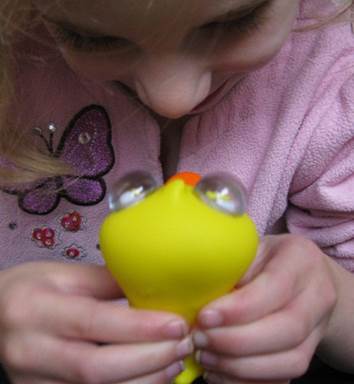

-
Cooking tasks:
- Stir cookie dough batter
-
Use garlic press, potato masher, juicer, hand mixer, sifter

- Open jars, remove lids from containers- find what is inside
- Squeeze water out of sponge, squeeze bulb or medicine dropper
- Fill liquid dishwasher soap dispenser with water and squeeze out liquid into sink
- Tear paper (increasing thicknesses)
- Use scissors on different textures

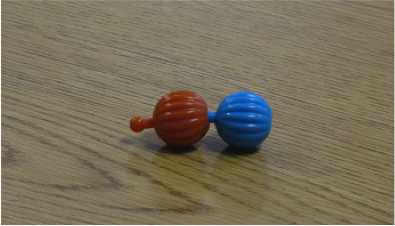
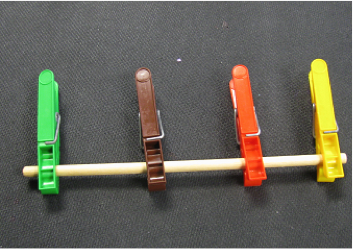
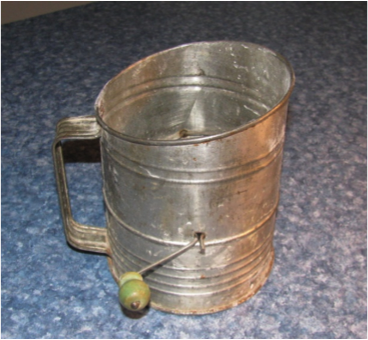
- Punch holes with paper-hole puncher
- Staple papers together
- Squeeze paper holders/clips
- Crumple paper into balls and glue to make shapes and pictures
- Squirt water from squirt bottle or squirt gun
- Hang things with clothespins
- Play modified tug of war games with yarns or shortened jump ropes
- Shovel sand in sand boxes
- Draw in wet sand with stick
- Push down on pump bottle dispensers (containers filled w/water)
- Lift/carry “heavy” objects, box lids
- Practice separating strong magnets
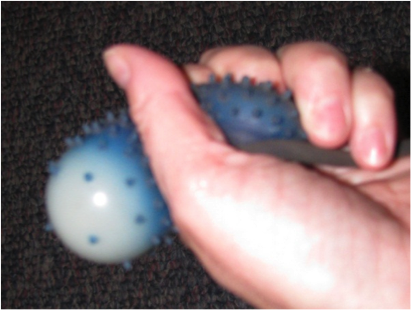
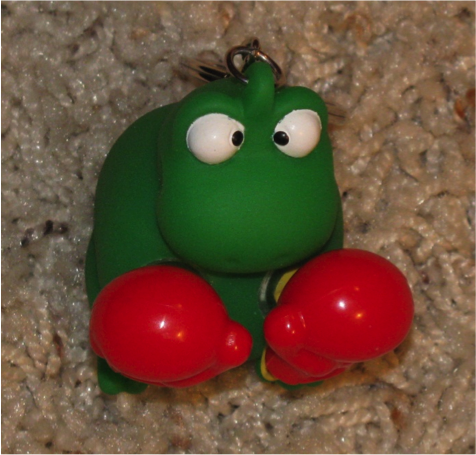
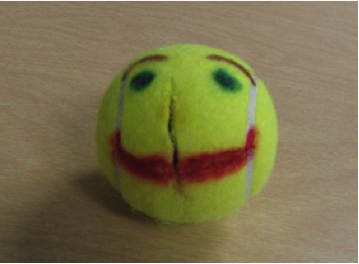
OT Tools for Increasing Hand Strength
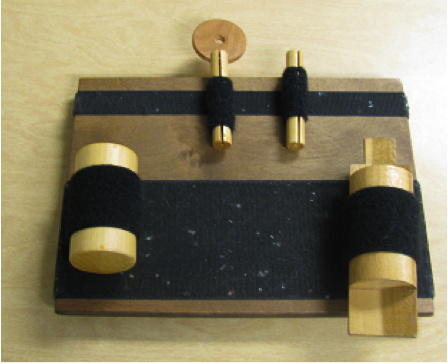
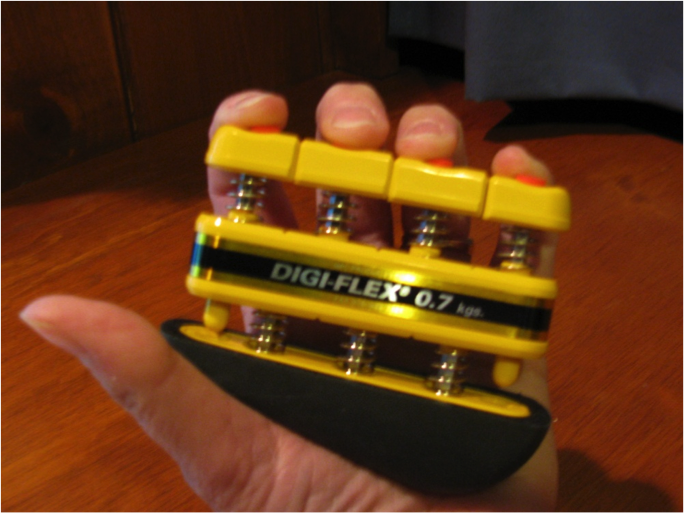
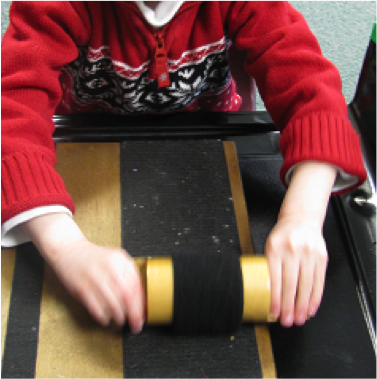
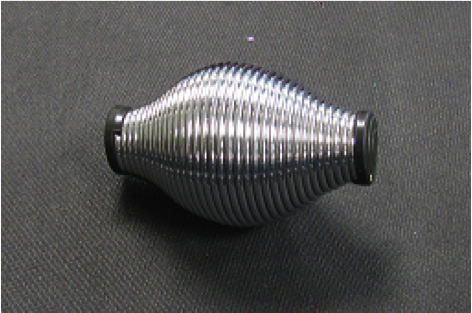

Wrist Strength
- Practice knocking on doors
-
Practice different kinds of waves
- Finger, wrist, arm, twisting left to right)
- Make circles with your wrist
-
Be a waitress/waiter
- hold something with your palm facing upward
- Practice fanning yourself with your hands
- Do crab walks and wheelbarrow walks
- Use Therabands: pull out with wrists
- Do weight bearing tasks such as yoga positions
- Wring out wet hand towels or sponges
- Practice twirling jump rope
- Open jars
- Twist screws into pre-drilled holes
Hand Dexterity
-
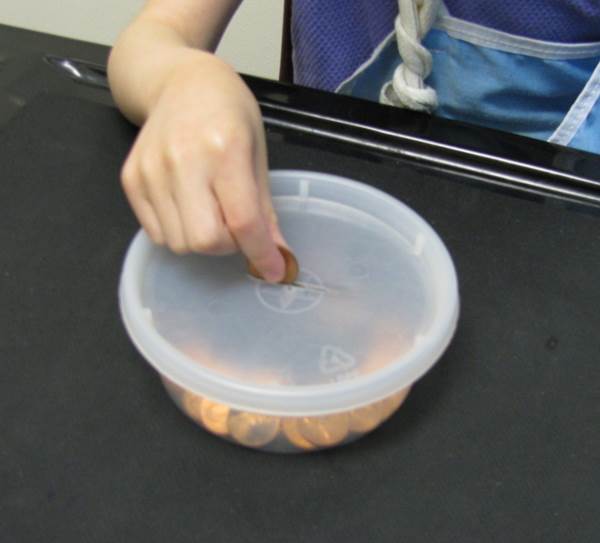 Put pegs in holes
Put pegs in holes - Play with puzzles with recessed holes
- Dial old fashioned phones
- Twist knobs on radios or toys
- Pull up a zipper
- Button
- Put small items in slots (coins, buttons, paper clips)
- String beads
- Play musical instruments
- Use scissors
- Learn correct hold of pencil/crayon
- Color shapes/pictures (use screen board/sand paper)
- Play games with small pieces
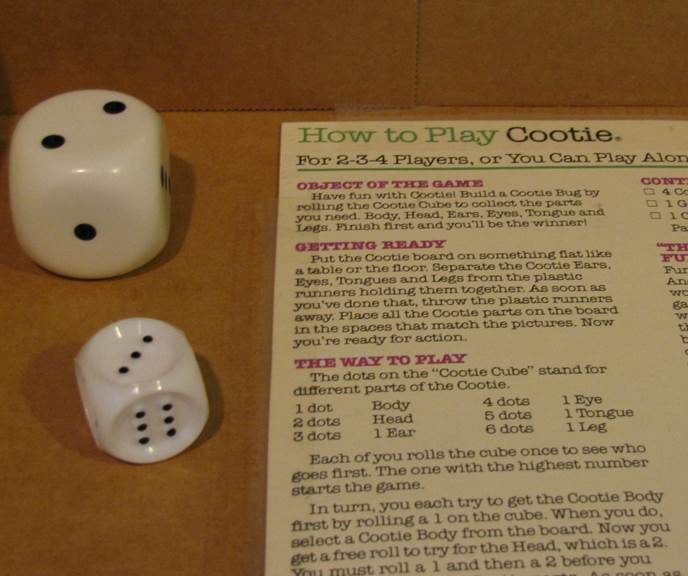
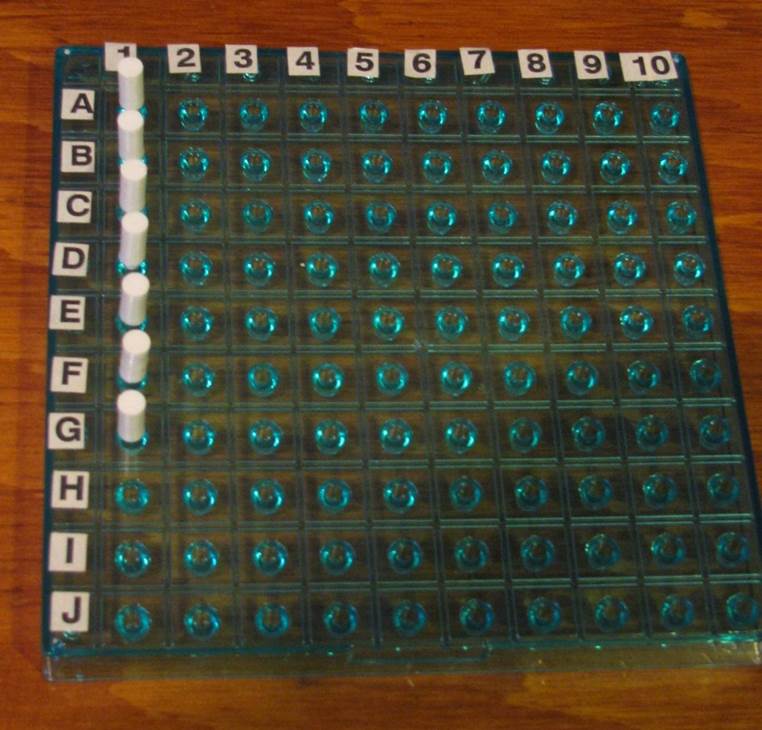
- Use tweezers or tongs to pick up objects
- Spray plants with water bottle
- Move marbles around in your hand (use different size marbles)
-
Hand skills: Cat's claw
- Bend fingers at the second joint
- Pair with “Meow”, slink like a cat
- Making fist and stretching out fingers to the beat of music or to count
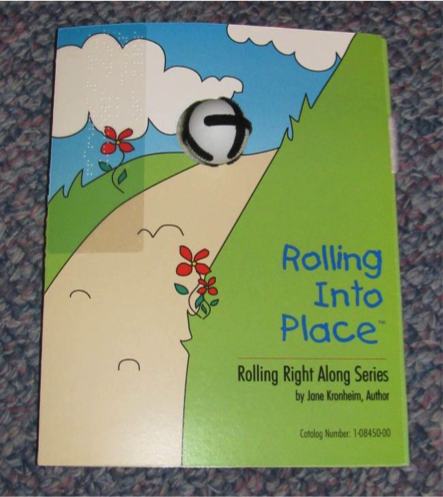
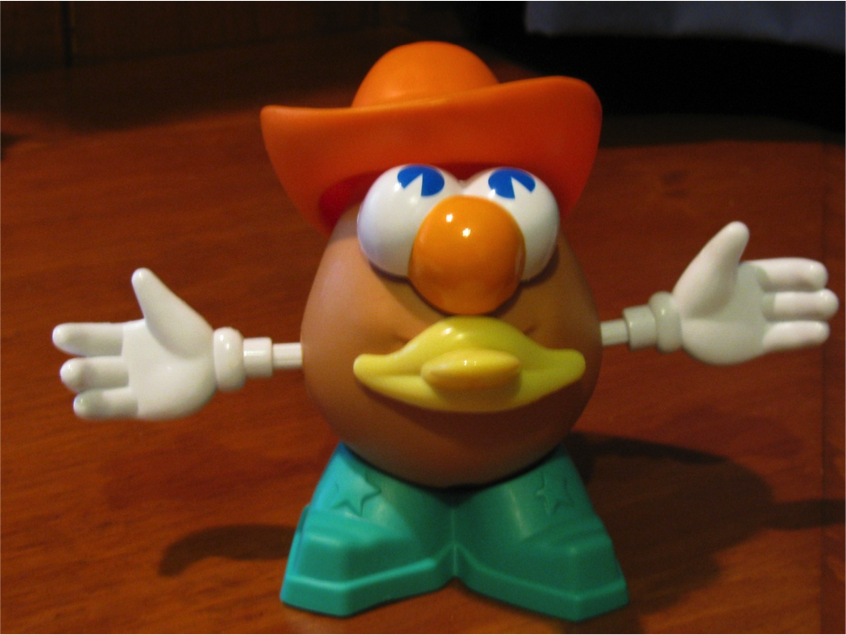
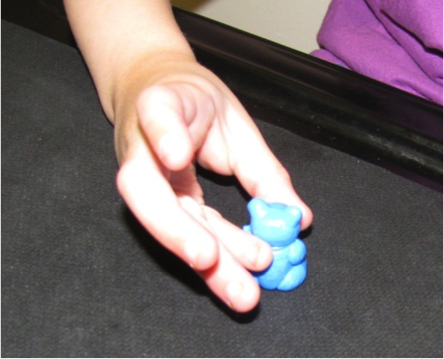
Finger Isolation
- “Where is Thumbkin…?”
-
Finger games
- Make finger circles
- Touch finger to palm
- Touch thumb to fingers
- Pinch nose
- Touch pointer to pointer from opposite hands
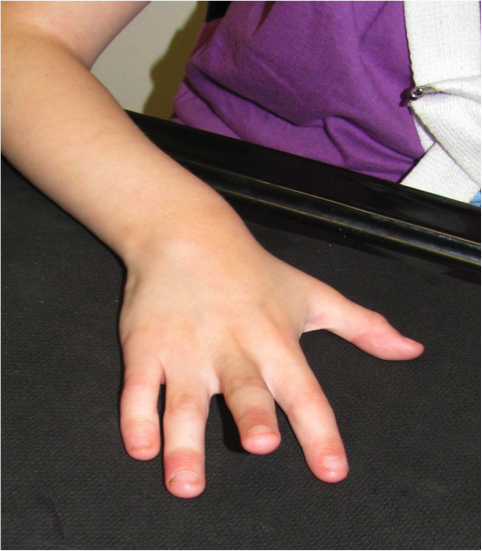
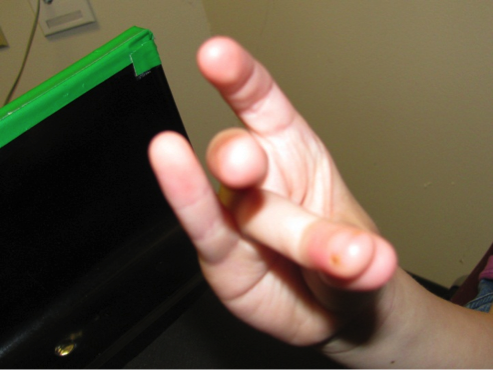
- Finger Isolation Songs
- Finger puppets
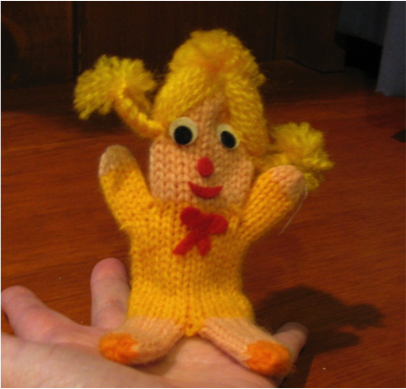
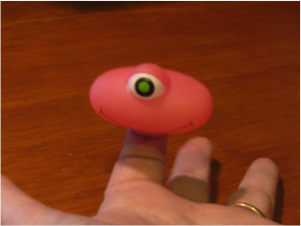
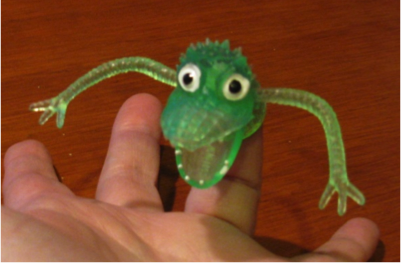
- Making donuts with clay
- Play with push button toys
- Play a piano
- Practice pointing to objects on pages with different fingers
- Use different fingers to pump hand sanitizer container before work each day
-
Use finger pointer to point to things with different fingers
Finger Strength
- Daily living skills- e.g. buttoning, zipping…
- Scribbling/writing letters on brailler
- Popping bubble wrap with thumb and one finger
- Pressing and activating talking toys
-
With putty/clay:
- Squeeze between two fingers (pointer and middle finger, middle finger and ring finger)
- Hold in fist and push thumb into center
- Squish putty with thumb and individual finger
- Pinch off putty into small pieces from larger piece

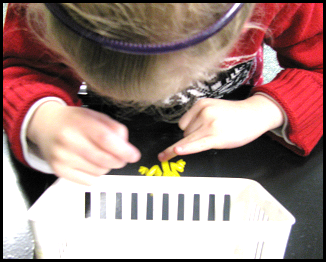
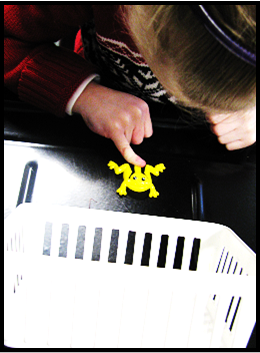
Tactual Discrimination
- APH’s Tactual Discrimination Worksheets (geometric forms, angular figures, line sheets, braille code character sheets)
- APH’s “On the Way to Literacy” storybooks and “Moving Ahead” storybooks, such as “Splish the Fish” and “The Boy and the Wolf”
- Teaching Touch from APH
- Flip-Over Concept Books from APH
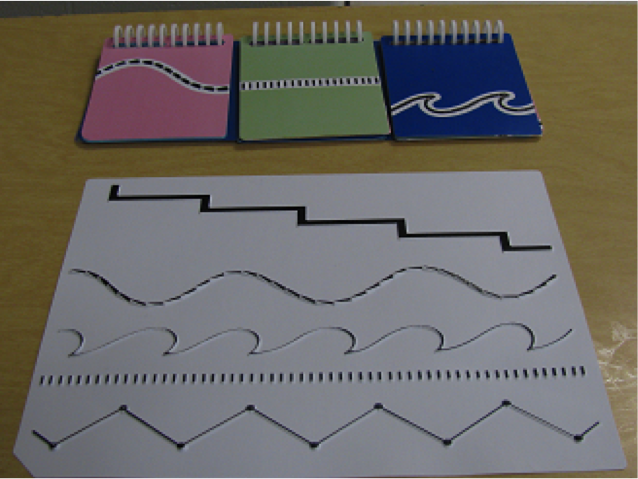
- Mangold Program, Patterns activities
- Squid Tactile Activities Magazine from APH
- Touch and Tell from APH
- Magnet game
- Mystery bag/box games
- Play sorting games with real objects (silverware, socks)
- Sort objects such as different beads, macaroni, beans or buttons into baskets or jars
- Use homemade books with known objects
- Create Pocket book of textures-put smaller texture squares into pockets
- Play “I spy” with objects-have student find named object from objects on tray
- Follow mazes and lines with two hands
- Sort/Sequence by temperature, thickness, texture, size, shape and function
- Puzzles and formboards
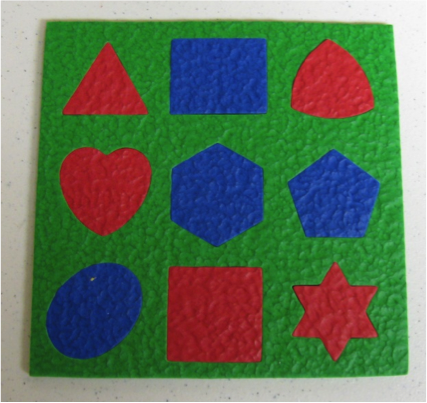
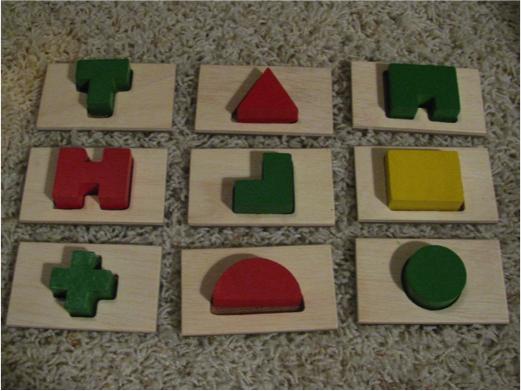
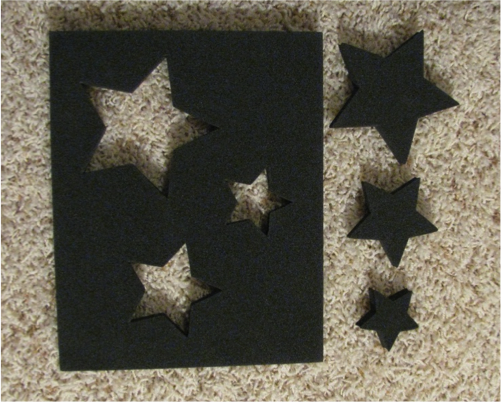
- Use crafts to encourage exploration, discrimination, matching and finding the same and different
Creating Tactile Discrimination Pages
Materials to use can include:
-
High dots/touch dots-lots of variety
-
Braillables/Clear Page Labels
-
Art supplies
-
Glue gun
-
Buttons
-
Graphic tape


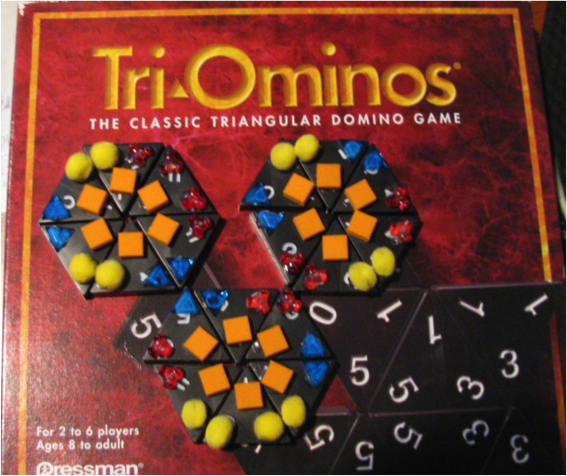
Tracking
- “Beat the Clock” game
- Mangold Program (cut into strips as necessary)
- Flip-Over Concept Books: Line Paths
- Graphing Tape-3 sizes
- Create paths to track using Wikki Stix, foam paint, yarn or string
- APH’s “Alphabet Scramble”, “Goin’ on a Bear Hunt” and “Turtle and Rabbit” books
- Make your own tracking cards
Tracking Practice:
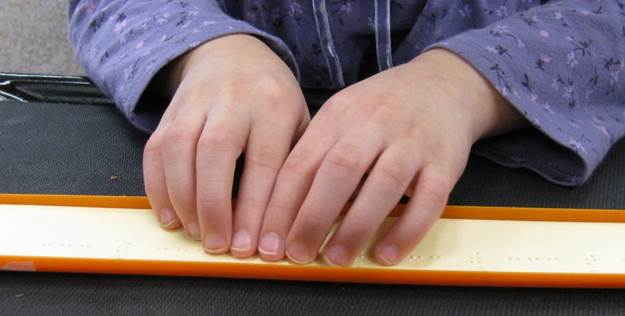

Hand Positioning
- Modeling (hand under hand)
- Handmade ruler device
- Hand curvature device
![]()
Marking Pages
- Use a variety of tools to make marking pages fun!
- Different sized push pins, magnets and magnet boards

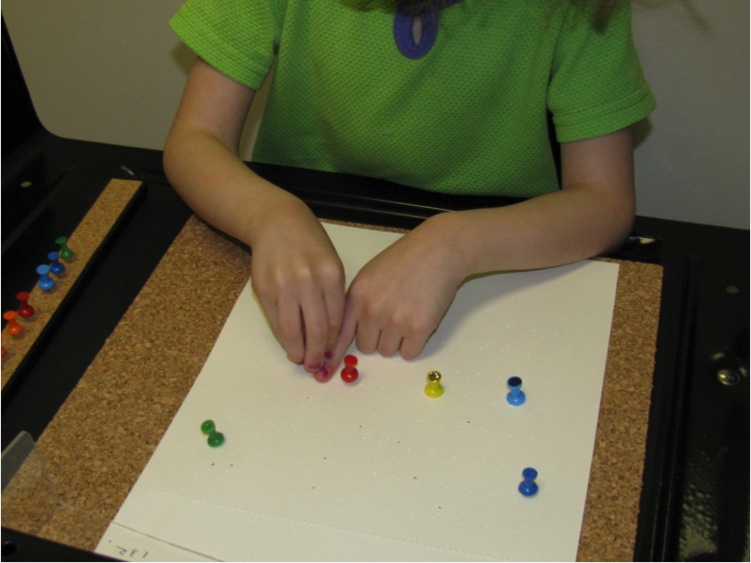
Marking Papers with Pencil or Crayon
- Use textured mat (screen board/sand paper) to practice marking with crayon
- Use Wikki Stix to create circle for learning to draw a circle
- Using crayon stub or Chunky Crayons (Chunky Critter Crayons) to learn correct hold position
- Holding marker with thumb while reading and flipping it out to mark papers
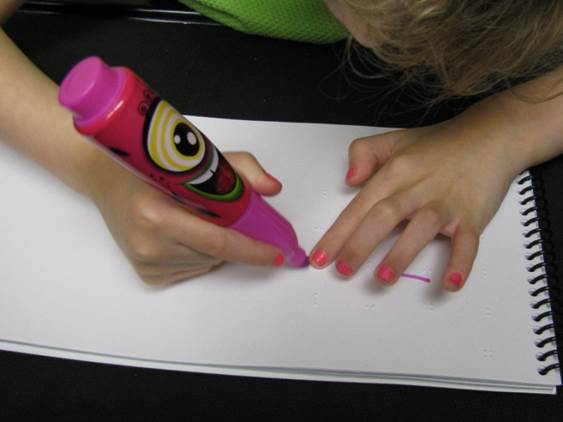
Adapting Braillers – for hand placement and adaptive keys
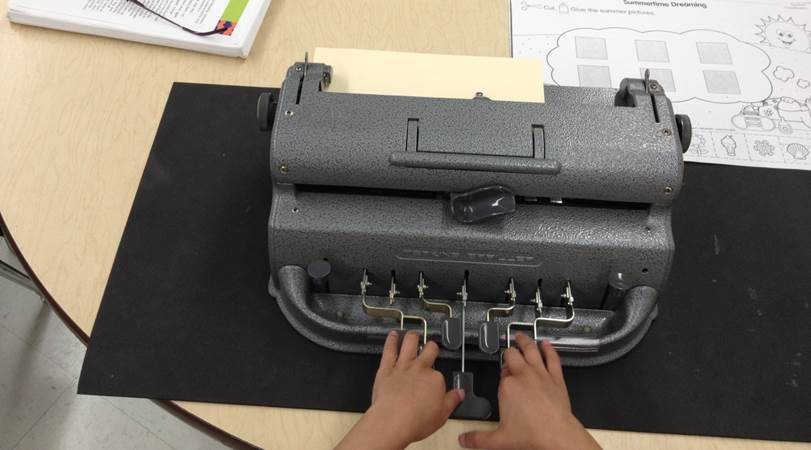
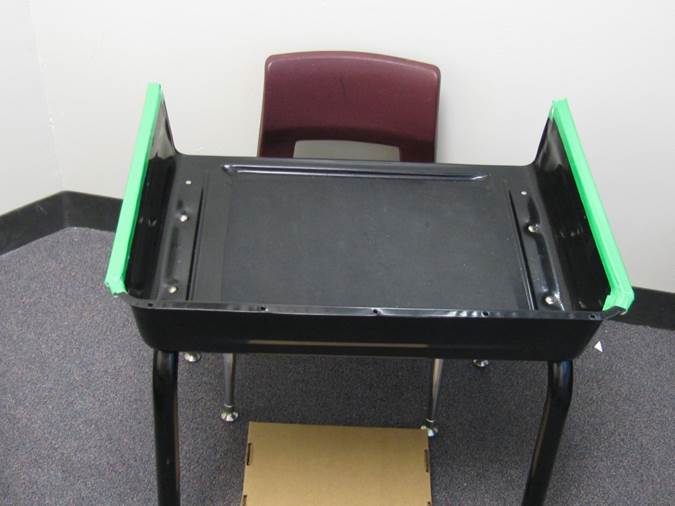
Setting up a Desk for Brailing:
- Arms should be no less than 90° angle to the surface of the braille page or of the keys ofthe brailler
Resources
- Beginning with Braille By Anna Swenson
- Instructional Strategies for Braille Literacy Edited By Frances Mary D'Andrea, Ph.D., Diane P. Wormsley, Ph.D.
- Guidelines and Games for Teaching Efficient Braille Reading By Myrna R. Olson, Sally S. Mangold
- UN’s The One – offers nice pre-braille assessment
- MathBuilders – Provides good shape discrimination


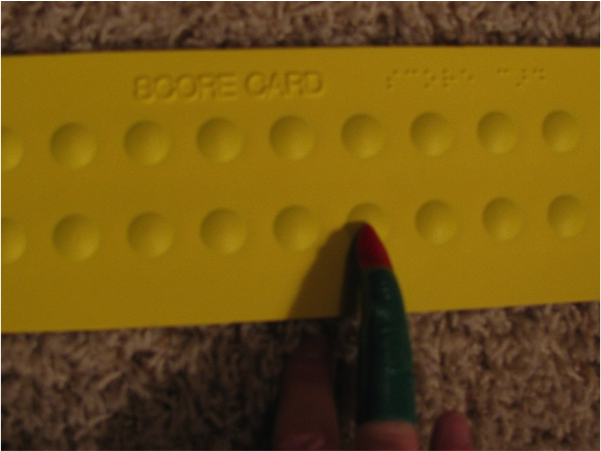
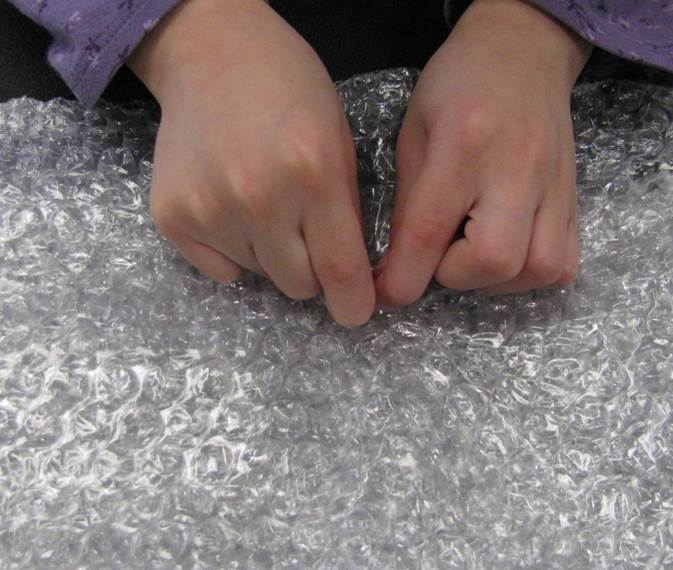
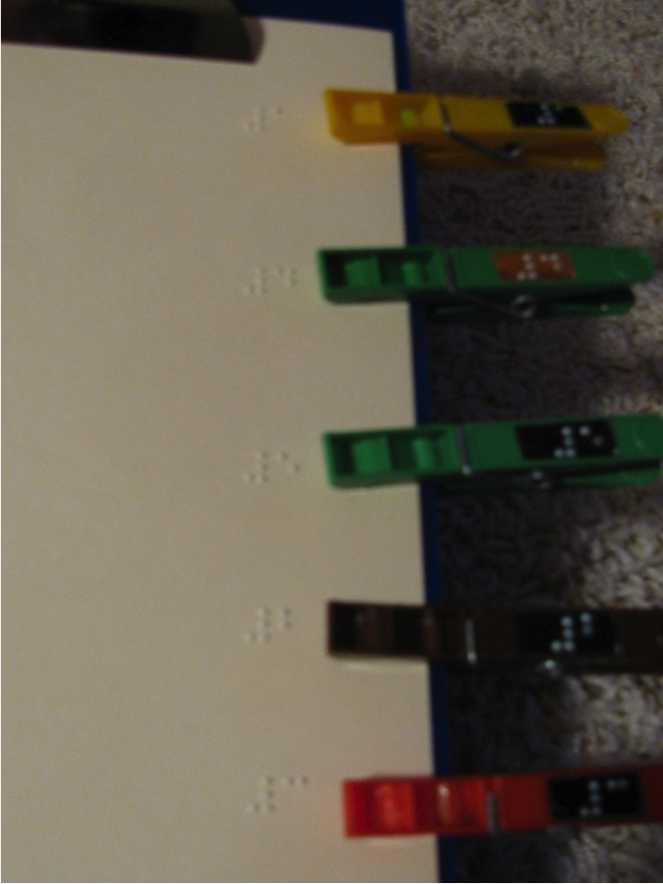
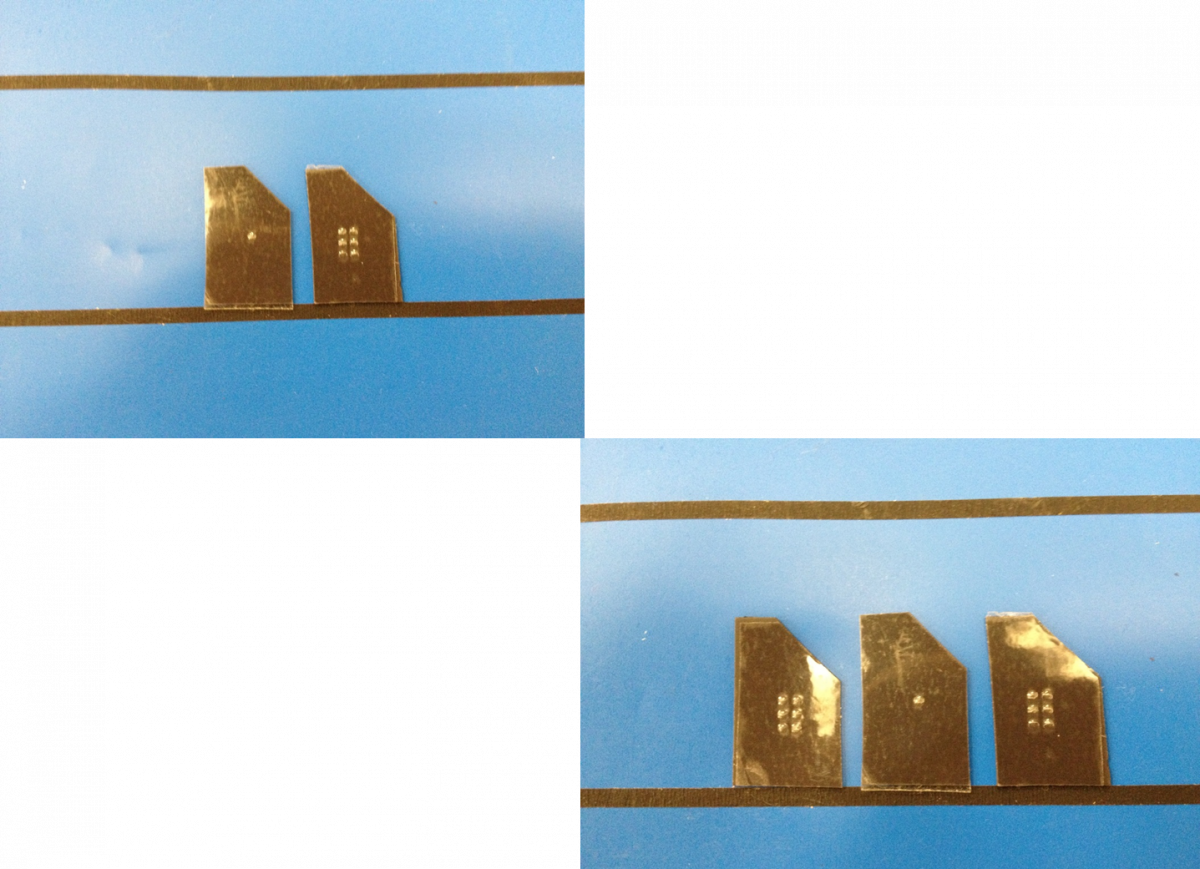
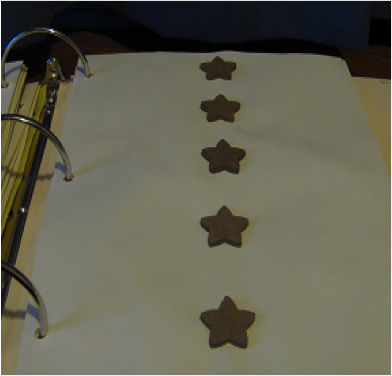
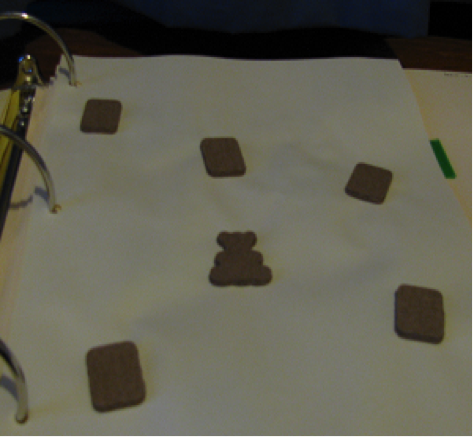
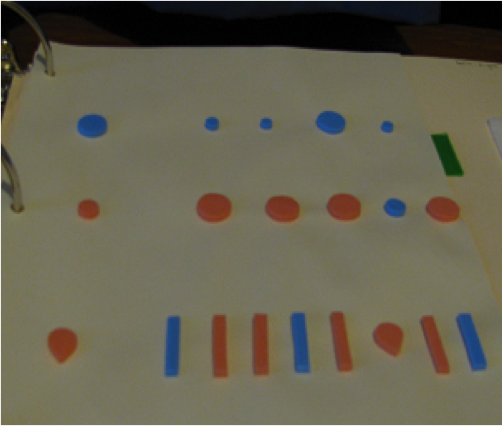
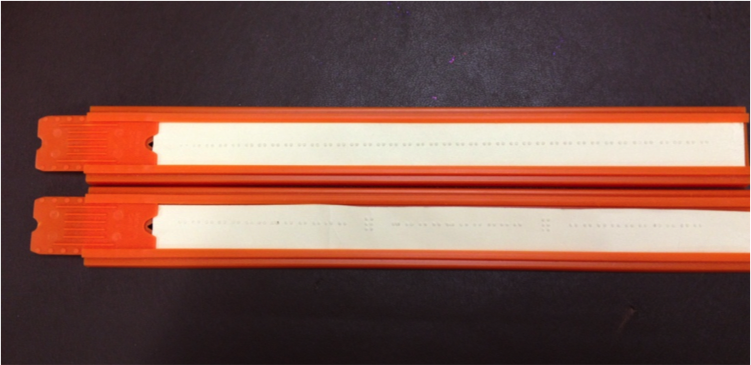
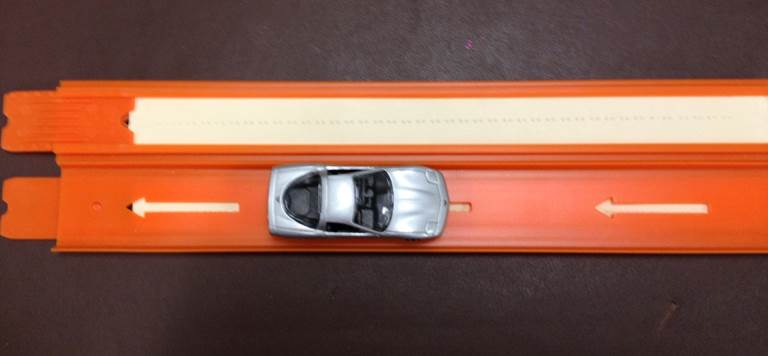
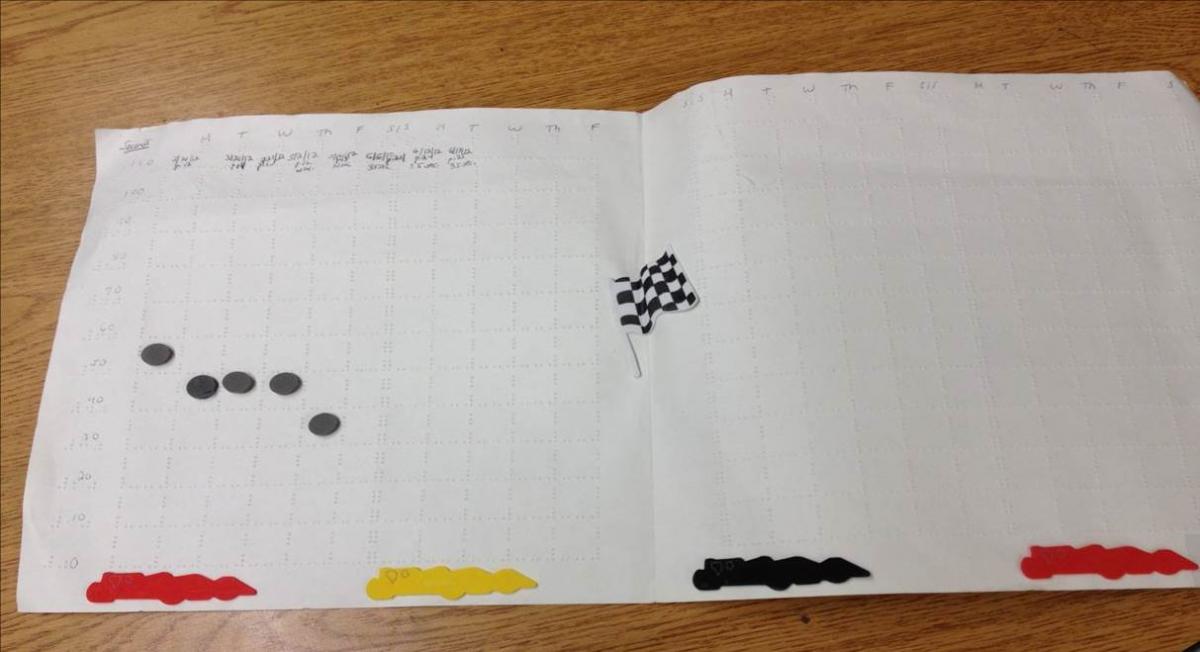
Comments
Question
Materials in Braille Post